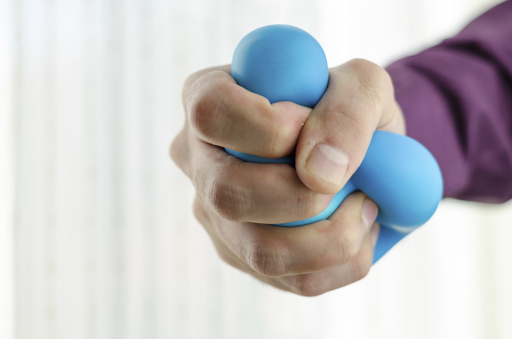2 Coping with stress

As Hackston and Moyle (2013) report, understanding the triggers to stress provides the first step to gaining control: we cannot avoid stress, so it is important to find the best coping strategies that work for us. Different people will find different strategies more or less helpful. People’s differing circumstances and access to help at work or from professionals varies, although there is much support available for free and online.
Sources of help include:
- in the workplace from managers, HR or occupational health departments
- from your GP or other healthcare professional
- professional counsellors (sometimes available on the NHS)
- self-help available online from organisations such as MIND or the NHS.
In general, organisations recommend that people look after themselves first by improving their eating and sleeping, being active, relaxing and having fun (NHS Scotland, 2016). These strategies may help with distracting people from lower-level stress and making them feel more positive. Then they may feel able to move on to working through their problems, thinking straight, talking to others (friends, health professionals, managers), and also better able to plan ahead so that stressful situations can be anticipated and coping strategies put in place.
One coping strategy that has gained in popularity in recent years is that of ‘mindfulness’. This is based on meditation as part of a mindfulness-based cognitive therapy (MBCT), which has helped people cope with depression, anxiety and sadness. One definition of mindfulness is:
a mental state achieved by focusing one’s awareness on the present moment, while calmly acknowledging and accepting feelings, thoughts, and bodily sensations. By being fully present in this way – not forcing things or hiding from them, but actually being with them, we create space to respond in new ways to situations and make wise choices.
You might have already tried meditation or you might feel very sceptical about it! In the next activity, you can revisit your technique or try it out for the first time.
Activity 2 Meditation
Read the technique below, then try it out (wait for a suitable moment if now is not convenient). Write some notes afterwards about how you felt doing it.
A one-minute meditation
Sit erect in a straight-backed chair. If possible, bring your back a little way from the rear of the chair so that your spine is self-supporting. Your feet can be flat on the floor. Close your eyes or lower your gaze.
Focus your attention on your breath as it flows in and out of your body. Stay in touch with the different sensations of each in-breath and each out-breath. Observe the breath without looking for anything special to happen. There is no need to alter your breathing in any way.
After a while your mind may wander. When you notice this, gently bring your attention back to your breath, without giving yourself a hard time – the act of realising that your mind has wandered and bringing your attention back without criticising yourself is central to the practice of mindfulness meditation.
Your mind may eventually become calm like a still pond – or it may not. Even if you get a sense of absolute stillness, it may only be fleeting. If you feel angry or exasperated, notice that this may be fleeting too. Whatever happens, just allow it to be as it is.
After a minute, let your eyes open and take in the room again.
Comment
Meditation is a difficult thing to get to grips with immediately, so do try it again on a different day, perhaps even on several occasions, before making up your mind about whether you think it might be useful or not. If you think you would find meditation useful, there are many organisations that offer taster sessions and courses, and there are also materials available online.
You will now move on to thinking about conflict, particularly within organisations.
